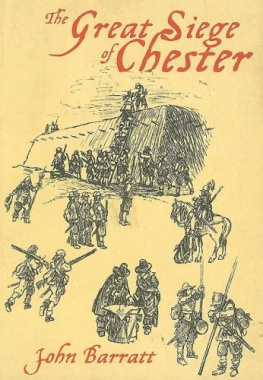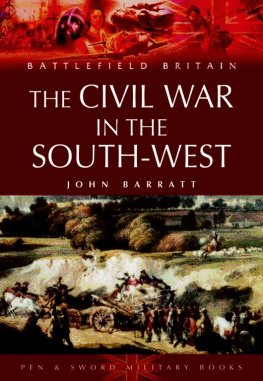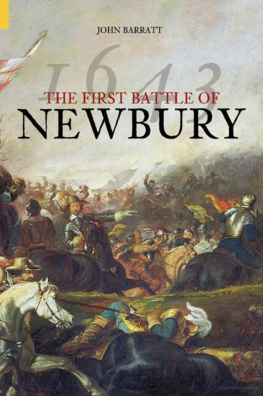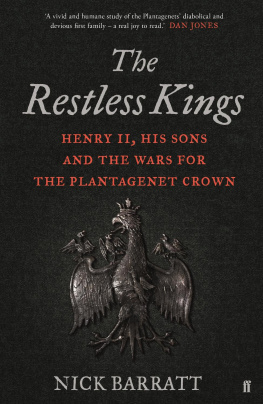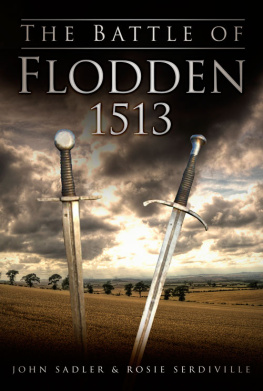B ATTLES
FOR THE
T HREE
K INGDOMS
B ATTLES
FOR THE
T HREE
K INGDOMS
THE CAMPAIGNS FOR
ENGLAND, SCOTLAND
AND IRELAND 168992
JOHN BARRATT

First published in 2007
The History Press
The Mill, Brimscombe Port
Stroud, Gloucestershire, GL5 2QG
www.thehistorypress.co.uk
This ebook edition first published in 2013
All rights reserved
John Barratt, 2007, 2013
The right of John Barratt to be identified as the Author of this work has been asserted in accordance with the Copyrights, Designs and Patents Act 1988.
This ebook is copyright material and must not be copied, reproduced, transferred, distributed, leased, licensed or publicly performed or used in any way except as specifically permitted in writing by the publishers, as allowed under the terms and conditions under which it was purchased or as strictly permitted by applicable copyright law. Any unauthorised distribution or use of this text may be a direct infringement of the authors and publishers rights, and those responsible may be liable in law accordingly.
EPUB ISBN 978 0 7524 9598 9
Original typesetting by The History Press
Contents
List of Maps
Preface
The literature on the Jacobite movement and the later attempts of the exiled House of Stuart to regain its British thrones is extensive. The 45 Rebellion is one of the most popular, and frequently over-romanticised, episodes in British history, and the earlier 15 and 19 Rebellions have attracted their share of interest.
Much less well known as a whole is the first serious Jacobite attempt to reverse the verdict of the Revolution of 1688. For the next three years both Scotland and Ireland were the scene of bitter and prolonged fighting, while England was the target of invasion attempts and Jacobite conspiracy. Some incidents of the war, notably the siege of Derry and the Battle of the Boyne in Ireland, and the encounter at Killiecrankie in Scotland, have secure places in British history, and, in the cases of the first two, still arouse strongly partisan feelings.
The war as a whole, however, is much less well known, particularly in England. So much so, in fact, that no universally accepted name for it has emerged, and it is variously known among other titles as the War of the British Succession; in Ireland as the War of the Two Kings, or the Williamite War; and, in its wider European context, as the War of the League of Augsburg and the Eight Years War. After some thought, I have opted for none of these, and as this book is primarily a military study of the conflict as it affected the British Isles, I have called it the War of the Three Kingdoms.
As always, thanks are due to a number of institutions and individuals. The Sydney Jones Library of the University of Liverpool provided much of the basic material used in researching this book, while the unrivalled resources of the British Library contain much contemporary material. The staff at Sutton provided much useful advice, not least in settling on the title of the book!
As this is primarily a military study, I have, with some relief, minimised discussion of the political and religious events leading up to the 1688 Revolution and the Settlement that followed. The debate over such questions as the exact motivations of James II and William of Orange in their actions that precipitated the Revolution remains heated, even after more than three hundred years. Published as I was completing this book was the magisterial study Revolution, by Tim Harris, which I would warmly recommend to anyone wishing to delve further into the murky but fascinating politics of 1688 and its aftermath.
John Barratt
Henllan
2006
Chronology
1685 |
6 February | Death of Charles II, succeeded by his brother as James II |
16 July | Battle of Sedgemoor |
1688 |
10 June | Birth of Prince of Wales |
5 November | William of Orange lands at Torbay |
10 December | Failure of James IIs first attempt to flee to France |
23 December | James IIs second attempt to escape to France successful |
1689 |
JanuaryFebruary | English convention declares James to have abdicated. William and Mary accept the English throne |
12 March | James II lands in Ireland |
14 March | Hamilton routs Ulster Protestants at Break of Dromore |
24 March | James enters Dublin |
27 March | Hamilton fails to take Coleraine |
Mid-April | Dundee begins Scottish Jacobite rising |
15 April | Ulster Protestants defeated at Clady and Lifford |
17 April | James II fired on from walls of Derry; siege begins |
1 May | Battle of Bantry Bay |
11 May | William and Mary accept Scottish throne |
13 June | Duke of Gordon surrenders Edinburgh Castle to Williamites |
27 July | Jacobite victory at Killiecrankie; Dundee killed |
31 July | Siege of Derry raised; Hamilton defeated at Newtownbutler |
13 August | Schomberg and Williamite forces land at Bangor Bay |
21 August | Highland army defeated at Dunkeld |
7 September | Schombergs advance halts at Dundalk |
Early October | Schomberg withdraws to Lisburn; James pulls back to Dublin |
1690 |
1 May | Scottish Jacobites routed at Cromdale |
14 June | William III lands at Carrickfergus |
30 June | French naval victory at Battle of Beachy Head |
1 July | Battle of the Boyne |
4 July | James II quits Ireland for France |
7 August | William commences operations against Limerick |
12 August | Sarsfield captures Williams siege train at Ballyneety |
27 August | Williamite assault on Limerick repulsed |
29 August | Siege of Limerick raised |
29 September | Marlborough takes Cork |
15 October | Marlborough takes Kinsale |
1691 |
9 May | St Ruhe takes command of Irish army |
8 June | Ginkel takes Ballymore |
19 June | Ginkel begins siege of Athlone |
30 June | Fall of Athlone |
12 July | Jacobites defeated at Battle of Aughrim |
21 July | Galway surrenders |
25 August | Second siege of Limerick begins |
Next page

